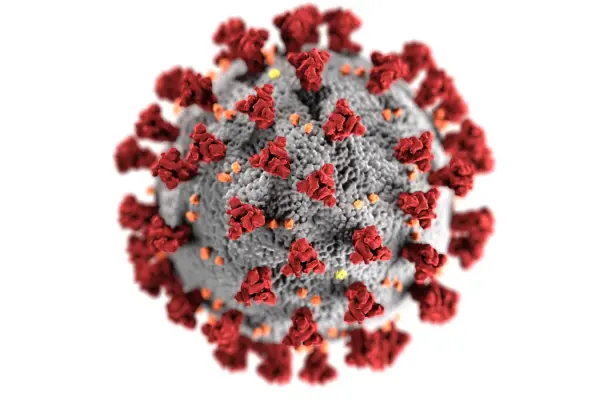India has reported a sharp increase in active COVID-19 cases during the last ten days of May 2025, with case numbers rising more than 1,400% from 257 to 3,961 by June 2, 2025. Official data from the Ministry of Health revealed an addition of 65 new cases within the past 24 hours, alongside five confirmed deaths reported on June 3, 2025. These developments have prompted health authorities and the public to tighten monitoring measures and have fueled concerns linked to a viral prophecy forecasting the pandemic's return in 2030.
This surge is primarily driven by the spread of Omicron subvariants NB.1.8.1 and LF.7. For instance, Kerala reported 1,147 active cases by the end of May 2025, making it the province with the highest case count, followed by Maharashtra (424 cases) and Delhi (294 cases). Gujarat, Karnataka, and Tamil Nadu each recorded over 100 active cases. Although most infections are mild, health experts caution that vulnerable groups—such as the elderly, children, and individuals with comorbidities—remain at higher risk of severe symptoms.
The NB.1.8.1 subvariant was first detected in Tamil Nadu in April 2025, while LF.7 began emerging in Gujarat the following month. Despite widespread vaccination and post-infection immunity shielding much of the population, their effectiveness wanes over time. Unlike previous waves that strained hospitals heavily, increased testing and ready isolation facilities are expected to reduce the healthcare system's burden.
The Indian government has proactively updated clinical management guidelines, bolstered antiviral drug stocks, and instructed hospitals to prepare dedicated isolation wards. In Jharkhand state, for example, East Singhbhum district added 26 hospital beds with oxygen support to anticipate a potential rise in patients. Authorities continue urging the public to wear masks in crowded spaces, maintain social distancing, and accelerate booster vaccination campaigns to curb transmission risks.
Meanwhile, the prophecy regarding the pandemic's resurgence in 2030 has resurfaced on social media platforms. Ryo Tatsuki—a Japanese manga artist nicknamed the "Japanese Baba Vanga"—predicted in a 1999 comic the appearance of an unknown virus around 2020, peaking in April, with a second emergence forecast for 2030. This prophecy has gone viral anew alongside India's case surge, sparking public anxiety over the possibility of a more severe outbreak in the future.
This prediction has ignited debate between belief in prophetic insights and reliance on scientific methodology. Epidemiologists emphasize that while such prophecies attract attention, precautionary actions should rest on evidence-based scientific data. Viktoria Vitanova-Kerber, a scholar researching Baba Vanga’s records, noted there is no documented evidence supporting these prophecies; many claims are retrospective interpretations made after events have occurred.
Both the public and medical communities in India have responded to the surge by enhancing educational efforts and expanding testing capacity. Kerala’s state government, for example, established a genomic monitoring center to track mutations in new variants, while central authorities appeal to citizens to remain calm and adhere to health protocols. Many doctors highlight that despite the rise in cases, death rates remain low, with most patients recovering from mild to moderate symptoms.
On the global stage, the World Health Organization (WHO) continues monitoring Omicron variants in South Asia as part of its ongoing vigilance. While some experts warn of a future "Disease X" threat, the current priority remains suppressing COVID-19 transmission, which now follows predictable spreading patterns. The international community is urged to prepare emergency response plans, strengthen surveillance systems, and ensure availability of ventilators and oxygen supplies—lessons learned from past waves.
With the surge still approaching its peak, India faces the challenge of balancing efforts to control transmission while maintaining socio-economic activities. The 2030 prophecy serves as a symbolic reminder that the pandemic should not be dismissed as fully over. Health experts advocate data-driven mitigation, and the public is encouraged to uphold health protocols, update vaccinations, and approach unverified claims with skepticism.
Sources
- https://www.business-standard.com/health/india-covid19-coronavirus-active-cases-today-deaths-kerala-maharashtra-125060300210_1.html
- https://www.parashospitals.com/blogs/covid-19-spike-india-2025-latest-cases-variants-vaccination-update
- https://www.financialexpress.com/business/healthcare-covid-19-cases-surge-in-india-doctor-warns-these-groups-are-at-most-risk-3866990
- https://healthviewsonline.com/rising-covid-19-cases-in-india-as-of-may-2025-a-detailed-report
- https://english.mathrubhumi.com/news/india/covid-cases-surge-kerala-maharashtra-worst-hit-may-2025-fnzuvj3b
- https://timesofindia.indiatimes.com/city/ranchi/e-sbhum-readies-isolation-wards-to-tackle-covid-cases/articleshow/121540446.cms







